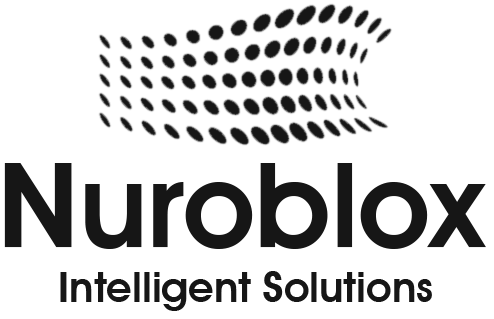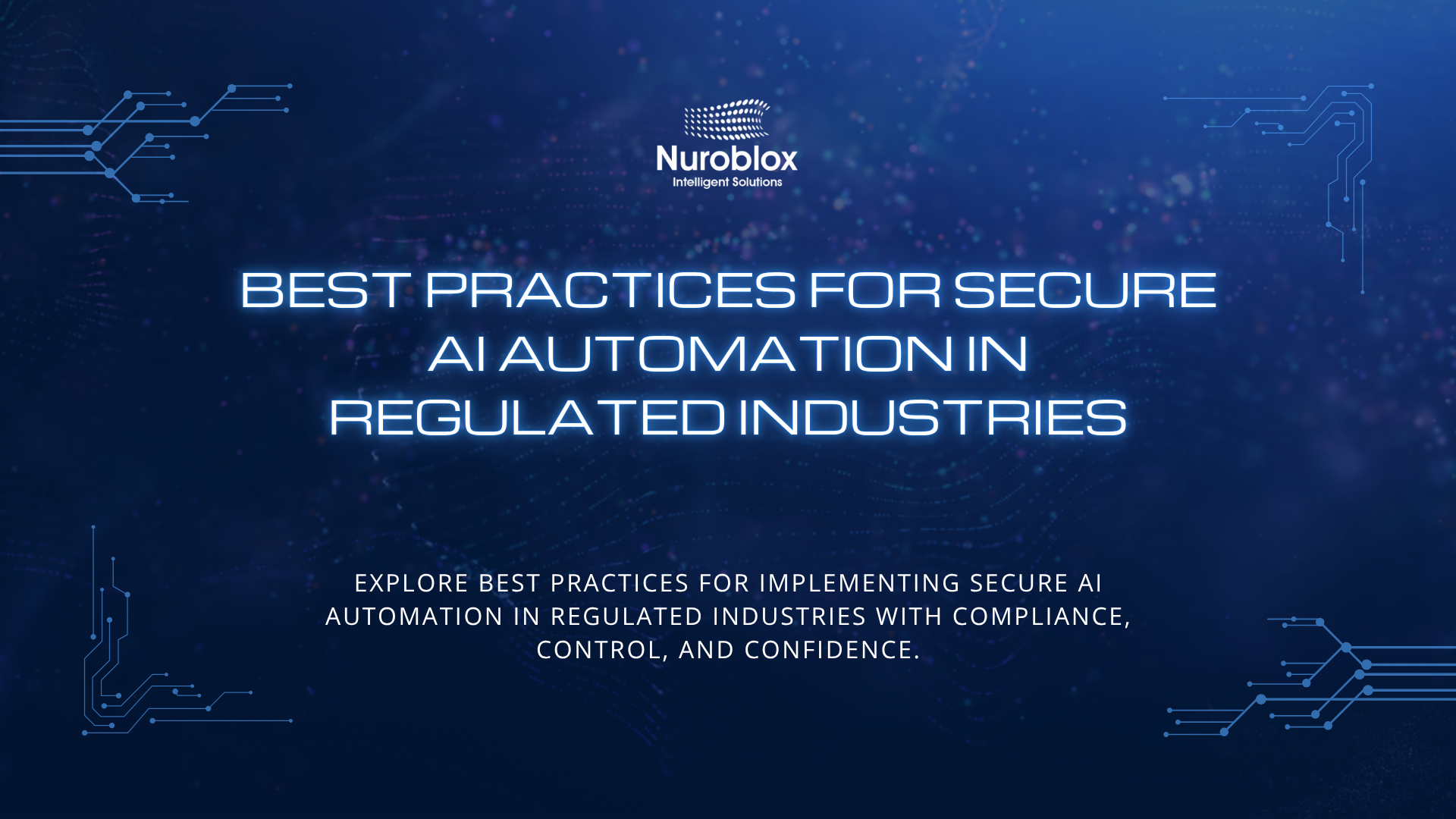Best Practices for Secure AI Automation in Regulated Industries
90% of organizations deploy AI systems, yet only 5% feel confident in their security readiness, creating a critical vulnerability gap in regulated environments. Organizations with extensive AI security automation achieve $1.9 million savings per breach and reduce incident lifecycles by 80 days, making secure implementation a direct cost-avoidance measure. For regulated industries handling sensitive data, implementing robust security frameworks is not optional – it is foundational to responsible AI adoption.
Understanding AI Security Risks in Regulated Environments
AI automation introduces unique security challenges beyond traditional IT systems. 73% of enterprises experienced at least one AI-related security incident in the past 12 months, with an average cost of $4.8 million per breach. 68% of organizations reported data leaks caused by employees sharing sensitive information with AI tools, while only 23% have dedicated AI-specific security policies.
Regulated industries face amplified risks because AI systems process vast volumes of sensitive data—from protected health information (PHI) in healthcare to personally identifiable financial records. Shadow AI usage alone adds $670,000 to breach costs, underscoring the importance of governance frameworks that provide visibility and control. Organizations lacking proper AI access controls represent 97% of breached entities, demonstrating that traditional security approaches fail for AI infrastructure.
Implementing Zero-Trust Architecture for AI Systems
Zero-Trust Architecture operates on the principle of “never trust, always verify” throughout the AI lifecycle. This framework addresses distributed AI workloads by requiring continuous authentication and authorization for every access request regardless of source. The implementation creates multiple layers of defense protecting AI assets even when perimeter defenses are compromised.
Core implementation components include: Identity-first security with multi-factor authentication and federated authentication for all AI system access. Micro-segmentation to isolate AI workloads, data stores, and deployment environments from other network resources. Least privilege access controls that limit each person or process to only the resources and data required for their specific role. Continuous verification and dynamic authorization that reassesses trust with every interaction rather than granting persistent access.
Data scientists should receive read-only access to production data with no ability to change model code in production environments. Separate service accounts for each step in the AI workflow control access to data, training environments, and model repositories. These granular controls prevent unauthorized lateral movement and contain potential breaches within isolated segments.
Data Protection and Encryption Standards
AI workflows handle vast volumes of regulated data requiring protection at every touchpoint. Adopt AES-256 encryption for data at rest to prevent unauthorized access in storage, and enforce TLS 1.3 for encrypted transmission over networks. This dual-layer approach is especially critical in multi-cloud or hybrid environments where data transfers between services.
Tokenization and data masking techniques provide additional protection layers. Replace personal identifiers with tokens in logs and apply masking techniques in user interfaces to avoid exposing full data unnecessarily. Implement data minimization principles by collecting and retaining only what is essential for the workflow’s purpose – strip metadata or truncate logs to eliminate excess historical data that poses security risks if breached.
Privacy-preserving technologies including encrypted inference and federated learning enable secure AI operations on sensitive data without compromising performance. These advanced techniques allow AI models to process encrypted data or train on distributed datasets without centralizing sensitive information, maintaining regulatory compliance while preserving AI functionality.
Regulatory Compliance Frameworks
Multiple compliance frameworks govern AI automation in regulated industries, each addressing specific security and governance requirements.
NIST AI Risk Management Framework provides a voluntary but highly influential approach focusing on four core functions: Map (contextualizing AI risks), Measure (assessing risks using defined metrics), Manage (prioritizing and mitigating risks), and Govern (embedding governance throughout the AI lifecycle). The latest NIST updates include detailed guidance for Large Language Models and generative AI, alignment with ISO/IEC 42001 AI Management System Standard, sector-specific risk templates for healthcare and finance, and recommendations for continuous monitoring and AI incident reporting.
ISO 42001 explicitly addresses AI risk, transparency, accountability, and bias mitigation. This global, industry-agnostic standard focuses on responsible AI development and deployment, requiring organizations to demonstrate how AI outputs are generated and maintain comprehensive documentation of decision-making processes. ISO 42001 evaluates leadership’s role, policy clarity, and procedural consistency across AI operations.
GDPR compliance for AI systems requires explicit consent for personal data usage, purpose specification and documentation, Data Protection Impact Assessments (DPIAs) for high-risk processes, transparency about AI-driven decision logic, and ongoing compliance monitoring. AI developers must guarantee consent is willingly provided and document specific, explicit purposes directing AI system design and operation.
HIPAA compliance is maintained through AI-powered identification of protected health information and secure access controls. IBM Watson Health uses machine learning algorithms to flag unauthorized access attempts to electronic health records in real-time, while AI-driven data anonymization techniques ensure patient data can be used for research without compromising privacy.
SOC 2 compliance evaluates security, availability, processing integrity, confidentiality, and privacy but does not have specific AI governance requirements. Organizations can incorporate AI controls into SOC 2 examinations as categories cover areas relevant to AI systems. Security controls protecting customer data can support responsible AI use, and documentation maintained for system uptime demonstrates reliability required for AI deployment.
Industry-Specific Implementation
Regulated industries require tailored security approaches reflecting sector-specific compliance requirements and risk profiles.
Healthcare organizations implement AI to identify PHI and ensure secure access through machine learning algorithms that flag unauthorized access attempts in real-time. AI-driven data anonymization enables research use of patient data without privacy compromise. Healthcare providers leverage AI automation for claims processing, with organizations like AXA improving fraud detection capabilities and achieving 20% decreases in fraudulent claims.
Financial institutions deploy AI for real-time transaction monitoring and fraud detection, analyzing millions of transactions daily to identify suspicious patterns and flag potential fraudulent activities. Automated KYC and Customer Due Diligence processes use AI-driven identity verification, biometric authentication, and document analysis to verify customer identities and assess risk levels. JPMorgan Chase implemented an AI-driven system analyzing legal documents that saves approximately 360,000 hours of work annually by automating review processes. HSBC utilized AI to monitor transactions for suspicious activity, reporting significant reductions in false positives that allow compliance teams to focus on genuine risks.
Banking compliance automation enhances accuracy, efficiency, and security while ensuring regulatory requirement adherence and reducing operational costs. Machine learning models detect fraudulent transactions ensuring data integrity and adherence to financial regulations by analyzing transaction patterns to identify anomalies indicative of fraud. These tools enhance anti-money laundering efforts by cross-referencing customer data with global watchlists, ensuring compliance with international financial standards.

Real-time monitoring integrates AI platforms with Security Information and Event Management (SIEM) and Security Orchestration, Automation and Response (SOAR) systems, configuring behavioral analytics to detect anomalies. Comprehensive logging supports auditability and incident response obligations required by regulatory frameworks.
Defense in depth applies multiple layers of security controls throughout AI systems protecting against different threat types at each stage from data collection to model outputs. Protective measures include validating and cleaning input data before training or inference use, encrypting data at rest and in transit between systems, filtering AI model outputs to block or flag harmful or sensitive content, and logging all model interactions and decisions for security review.
Organizations should establish AI security audits inventorying all AI systems, assessing current controls, and identifying gaps. Regular audits ensure AI systems function as desired and maintain compliance with regulatory stipulations as part of a continual commitment to data privacy and security. Automated compliance workflows document controls, maintain audit trails, and prepare organizations for regulatory scrutiny.
Building Security-First AI Governance
The AI cybersecurity market reached $22.4 billion in 2023 and continues growing at 21.9% annually as enterprises prioritize protection. Organizations must establish cross-functional governance frameworks addressing authentication, authorization, monitoring, compliance, and integration challenges unique to artificial intelligence systems.
Implement agile, cross-functional mindsets bringing together security teams, data scientists, compliance officers, and business stakeholders. Define AI security policies tailored to organizational risk profiles and regulatory requirements rather than applying generic IT security frameworks. Establish procedures for ongoing compliance supervision and AI system audits that identify and rectify compliance problems as they occur.
Automated regulatory reporting tools extract, validate, and format financial data to generate error-free reports ensuring timely compliance. Automation helps conduct internal compliance audits reducing the risk of inaccuracies and missed deadlines. These systems enable organizations to adapt to legal and technological shifts while maintaining stakeholder trust.
Implementation Roadmap
Organizations should prioritize high-impact initiatives following structured implementation phases. Conduct comprehensive AI security audits inventorying all AI systems, assessing current controls against regulatory requirements, and identifying gaps in protection. Implement identity-first security deploying multi-factor authentication, federated authentication, and token lifecycle management.
Establish real-time monitoring integrating AI platforms with SIEM/SOAR systems and configuring behavioral analytics. Enforce zero-trust access applying least privilege principles, dynamic authorization, and continuous verification throughout AI infrastructure. Automate compliance workflows documenting controls, maintaining audit trails, and preparing for regulatory scrutiny.
Assessment and planning phases should inventory AI assets, identify critical resources, and understand risk exposure before implementing technical controls. Training and awareness programs educate teams on security principles tailored for AI systems ensuring organizational readiness. Regular reviews and iterations audit and update controls to adapt to emerging threats in evolving AI landscapes.
Organizations treating AI security as a strategic enabler rather than a cost center position themselves to innovate responsibly while maintaining stakeholder trust and regulatory compliance.


